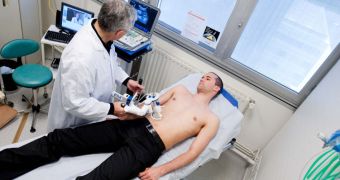The European Space Agency (ESA) is aware that some of the most common medical imaging techniques, such as ultrasound, are largely unavailable on spacecraft, as well as in small clinics and in remote, impoverished areas. As such, it is currently testing a system that can be operated from afar.
This technique is very effective and useful for diagnosing a variety of medical conditions, but qualified operators only exist in small numbers, and unevenly distributed throughout.
ESA is taking steps to address this imbalance, and the new robotic system is its main card in this project. Telemedicine is the way of the future, officials at the organization believe.
Trained ultrasound technicians could help people located thousands of miles away on Earth, or hundreds of kilometers up above, in space, without leaving the comfort of their own offices.
When conducting ultrasound investigations, the expertise of the healthcare expert interpreting the readings is oftentimes just as important as having access to the actual device itself.
With the robotic ultrasound system, things get really simple. An assistant keeps the device against the patient, and the expert operates the probe from far away, just as if they were present in the room.
The professionals see what they are doing on a display, and control the movements of the ultrasound device via a joystick. The feedback takes place in real time, scientists say.
“The guiding principle behind telemedicine is that it is more convenient – and often much less costly – to move knowledge around than people,” explains Arnaud Runge.
The expert holds an appointment at ESA, where he is the biomedical engineer overseeing the Advanced Robotized Tele-echography Integrated Service (ARTIS) project.
“Remote access can be vital for astronaut medical emergencies, and the system was originally developed for Earth-based space mission simulations, such as the remote Concordia base in Antarctica,” he goes on to say.
“But ARTIS can also benefit a very broad community of terrestrial users, improving access to healthcare for people in underserved or isolated areas,” Runge explains.
The currently-tested system is a case study. If successful, ESA plans to implement a much wider variety of telemedicine medical services, which could greatly contribute to saving thousands of lives.
“Ultrasound is the most demanding telemedicine scenario. It gathers a wealth of medical information, but is strongly dependent on well-qualified experts making real-time interpretation of dynamic data,” Runge concludes.

 14 DAY TRIAL //
14 DAY TRIAL //